7 popular defects of bulk floors: causes and solutions
What could be simpler than bulk floor technology? We mix the components, pour the mixture on the floor and get a perfectly aligned surface. This is what most home masters think, who decide to independently carry out the procedure for creating a bulk floor. However, this simplicity and ease of technology is only apparent. According to some reports, only 30-40% of all bulk floors are ideal. Others have defects associated primarily with violations of the technology of their device.
Many damage to the bulk floor can be repaired without major repairs, that is, without completely dismantling the surface. Typically, the identified marriage is blocked by an additional finishing layer of a self-leveling mixture. But there are also more complex defects, for the complete elimination of which it is necessary to open the floor, completely remove the bulk layer and even repair the concrete base.
Common defects:
- peeling, swelling of the finish layer;
- cracks on the surface;
- cove;
- small inclusions, foreign particles on the surface;
- delamination, clouding;
- knolls and hollows;
- premature wear.
If these signs of destruction have a place to be, it's time to start repairing the filling surface. Consider the restoration methods that need to be carried out with one form or another of deformations.
Content
Defect number 1. Bloating, peeling of the filler surface
Bloating is manifested as the formation of single or multiple bubbles on the bulk floor. Their surface can become covered with cracks (if the layer is thin) and collapse. In this case, we can talk about exfoliation.
The cause of swelling and exfoliation is insufficient adhesion (adhesion) of the bulk layer and base. The coating, not properly glued to the base, begins to move away from it.
Errors in technology leading to bloating and exfoliation:
- Inadequate cleaning of the concrete base from dust, grease stains and other contaminants.
- The use of low-quality primer.
- Laying the filler layer on a damp base. In this case, excess water and condensate rejects the bulk layer, bubbles and exfoliation form.
- Low grade strength of the concrete base.
- Failure to comply with the time interval between application of the layers of the bulk floor.
- Coating components are not thoroughly mixed before pouring. Mixing must be performed only mechanically, using special nozzles.
- Unfair removal of air bubbles from the coating using a needle roller. Bubbles remaining in the thickness of the coating, during drying, move to the surface and leave behind them swollen bubbles or bursting "craters".
- Violation of temperature and humidity indicators in the room. According to the technology, during work, the temperature in the room should be above 5 ° C, and humidity should be below 60%.
Elimination of blisters and peeling:
- All swellings must be removed. You can clean the bubbles and formed "craters" with a grinder or manually using a spatula.
- They clean the floor of small particles of construction debris and dust. To do this, vacuum the surface, do wet cleaning.Before proceeding to the next step, the base is thoroughly dried.
- Primed places of defects, if necessary - twice.
- Fill defects with the used self-leveling mixture. Alternatively, a polymer or cement filler can be used. Cement putty is intended for cement bulk floors, while polymer putty is universal, many of them can be used not only for polymer, but also for cement (or concrete) coatings.
If the poured floor is not front, then at this step the repair can be completed. The bulk floor, used as a front coating, needs a complete visual masking of the “patches”. Therefore, the entire floor is poured with a finishing bulk layer, fully adhering to the manufacturer's instructions for the self-leveling mixture.
Defect number 2. Cracks
Cracks - a frequent defect in the bulk floor. Sometimes they are shallow, sometimes they reach the concrete base. Usually, the appearance of cracks is associated with a poor-quality base on which the bulk floor was laid. This is the most common cause, but not the only one. Also, there is a violation in pouring technology.
Causes of cracks:
- Too thick filling layer (more than 7 mm).
- The presence of cracks on the base.
- Loose base, prone to movement.
- Insufficient base reinforcement.
- Failure to comply with the proportions of the components of the bulk mixture, namely the addition of more water than required by the instruction. Too thin solution often cracks when dried.
- Application of the bulk mixture on a wet screed.
- Use of an expired bulk floor mixture.
If the cracks are single and the bulk floor is not a front coating, it is not necessary to completely re-fill the floor. The optimal solution is to fill such cracks with a self-leveling mixture.
The process of filling cracks:
- With a small crack width (up to 1 cm), it is expanded to about 2 cm along the entire length. This can be done with a grinder (grinder) or a metal brush.
- Remove dirt from the walls of the crack, pull the dust with a vacuum cleaner.
- The walls of the crack are treated with a primer and allowed to dry. If necessary, repeat the treatment.
- The crack is filled with polymer or cement putty, leveled flush with the rest of the surface. If necessary, fill the entire floor with a new bulk layer.
In the event that the floor is cut with a network of cracks, filling them no longer makes sense. It is necessary to completely dismantle the coating and evaluate the condition of the concrete base - most likely it was it that gave impetus to such deformations. If errors are found, first repair the base, and then - pour in a self-leveling mixture again.
Repair of the base usually consists in sealing all cracks existing in concrete (screed) with cement mortar or putty. The surface should be level-aligned, the permissible differences between the highest and lowest points - no more than 2-3 mm.
Defect number 3. Cove
In some especially advanced cases, crack formation keeps up with delamination. This phenomenon manifests itself in a cove. That is, part of the bulk surface is cracked and, at the same time, breaks away from the base. A piece of the bulk layer is formed that is not connected with anything, which moves (creaks) underfoot.
Reasons for the cove:
- The absence of a waterproofing layer on the surface of the base and the presence of cracks on it. In this case, water seeps through the cracks into the interlayer and breaks the connection between the base and the bulk layer.
- Dirty and dusty surface of the base, which does not allow high-quality adhesion of the bulk layer.
- Application of the bulk mixture on a damp base (with a moisture content of more than 4%).
Elimination of the cove:
- The drained section of the self-leveling floor is removed.
- They clean the base and edges of the defect from dust and dirt, for the best result, wipe the base with a damp cloth.
- Apply waterproofing impregnation (primer) to the base, usually the treatment is carried out 2-3 times.
- The defect is poured with a self-leveling mixture flush with the rest of the surface.
For the best effect, fill the entire floor with an additional finishing layer (it is desirable to do this for polyurethane and epoxy compounds, which themselves are a finish coating, optionally for cement compositions used for leveling under a laminate, parquet, etc.).
Defect number 4. Hillocks and hollows
Sometimes the bulk floor is uneven. After drying, hollows (pits) or tubercles are clearly manifested on it. Such a defect not only reduces the decorativeness of the floor, but can also prevent the laying of the finish coating (laminate, parquet, etc.) on it.
The causes of the appearance of hillocks and depressions:
- Uneven concrete base. If there are significant bumps or depressions on the base, then all these defects are more likely to be printed on the surface of the bulk floor.
- Filling the mixture "by eye".
- Failure to comply with the recommended proportions when mixing the components of the bulk mixture. If during the mixing process more water was added than the instruction requires, then, after drying, depressions often appear on the surface. If, on the contrary, little water has been added, the surface becomes hilly.
To remove the tubercle, the floor is ground. Then fill the surface with a finish layer of a self-leveling mixture.
The cavities are filled with putty (on an epoxy or cement base) or with the same self-leveling mixture, which is used for the entire coating. After drying, put the final bulk coating (if necessary, if the bulk layer is front).
Defect number 5. Small inclusions, roughness
If dust or small particles of debris get on a dry bulk floor, then pimples, roughness, small irregularities form on its surface. In this case, it is impossible to achieve a mirror, absolutely smooth surface.
Causes of the defect:
- Insufficiently cleaned concrete base, the dirt from which fell into the bulk mixture and spread over its surface.
- Dust floating in the air and deposited on an as yet uncoated bulk surface.
Elimination of small roughness:
- The surface of the floor is cleaned from dust.
- Apply a thin topcoat overlying defects.
Defect number 6. Turbidity
Turbidity - the appearance of a whitish tint on the bulk floor. Turbidity can significantly degrade the decorative qualities of the coating, making it dull, inexpressive (this is especially noticeable on colored bulk floors). Turbidity reduces the aesthetic properties of the material, but does not impair performance. Therefore, this defect must be eliminated on polyurethane and epoxy floors. On cement coatings, which are usually used for leveling under the finish flooring materials, haze can be ignored.
Reasons for turbidity:
- Contact with grease, aggressive chemicals on the surface of the bulk floor.
- Excess water in a self-leveling mixture.
- Poorly mixed components of a self-leveling mixture.
- Incorrect mix ratio.
Fix the defect with "little blood" will not work. Therefore, if the decorative qualities of the coating should be on top, it is recommended to fill the existing floor with another finishing layer. Naturally, it is worthwhile to fully adhere to the pouring technology recommended in the instructions for the self-leveling mixture.
Defect number 7. Premature wear
The service life of the bulk floor is up to 10-20 years (polymer coatings are more durable than cement ones). Therefore, if after a couple of years of operation, the floor began to crumble, turn white (from scratches), then we can talk about its premature wear.
Causes of premature wear:
- Reinforced load on the surface (in workshops or in warehouses where vehicles move or heavy mechanisms are installed).
- Use of expired components of the bulk mixture.
To update a coating that has become unpresentable, just apply another thin top coat on top of the existing layer. Particular attention should be paid to the selection of high-quality components of the mixture and compliance with the technology of pouring the bulk floor.
If there are noticeable chips on the surface, then they are primed and filled with putty (on a cement or polymer basis). After that, fill the floor with a new bulk layer.
Thus, it is possible to fix almost any defects and deformations of the bulk floor. However, it is best to be proactive, avoiding technological errors during the creation of the bulk coating.


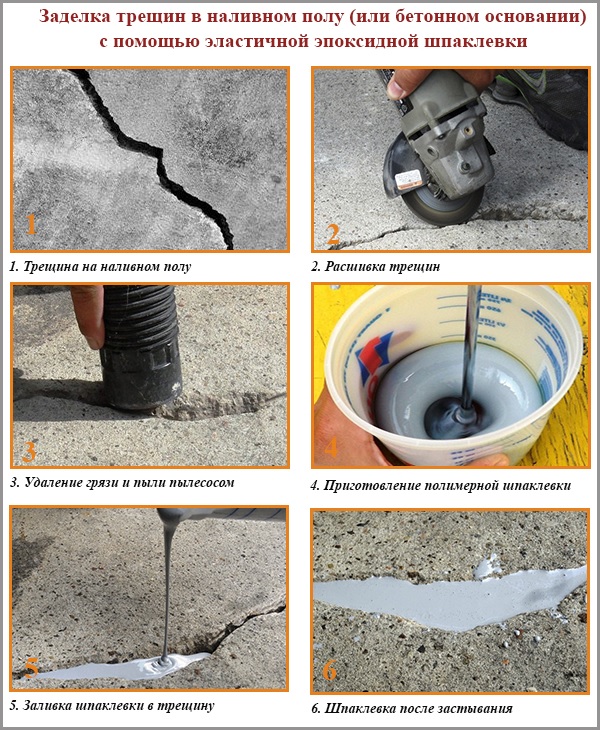
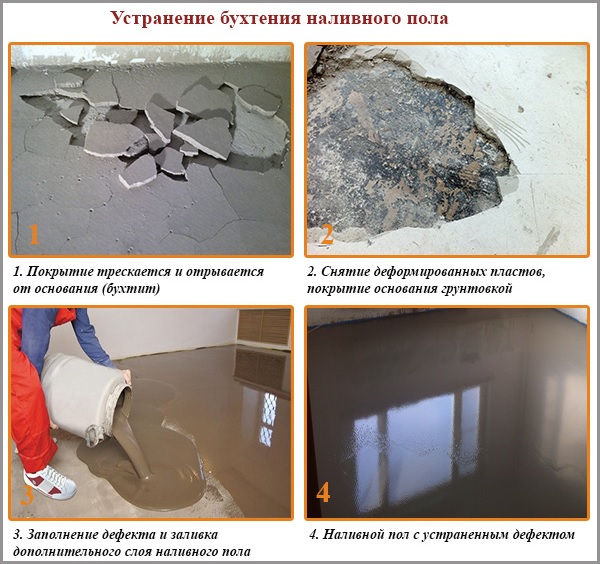
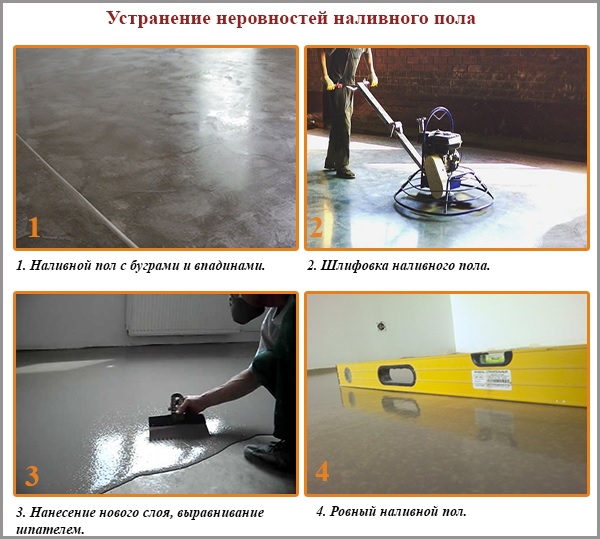
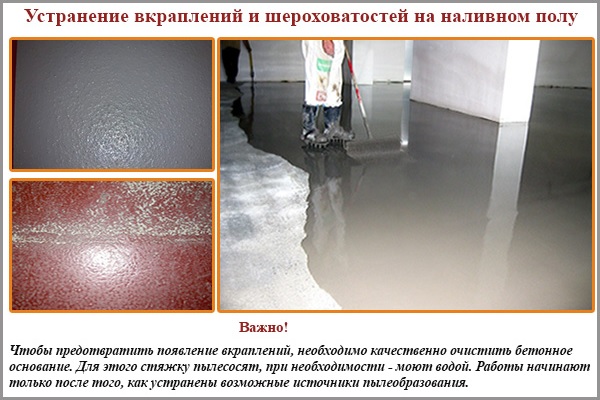
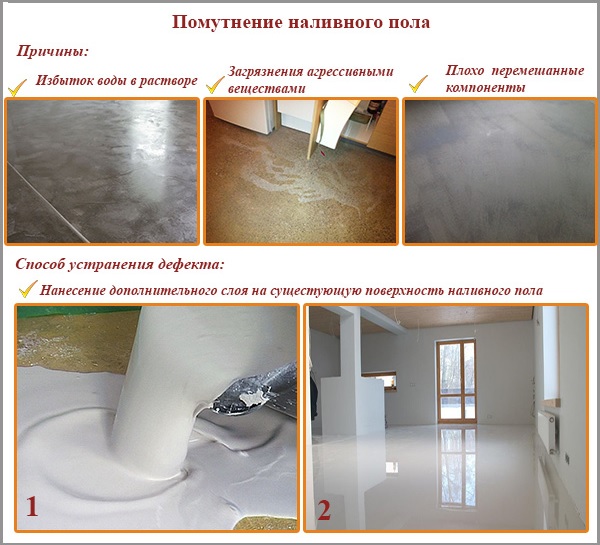
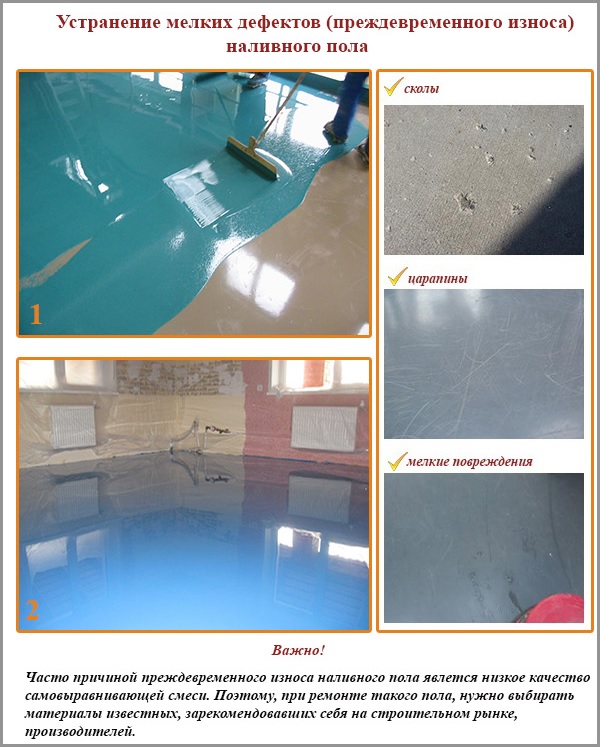

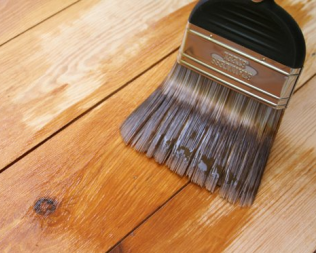
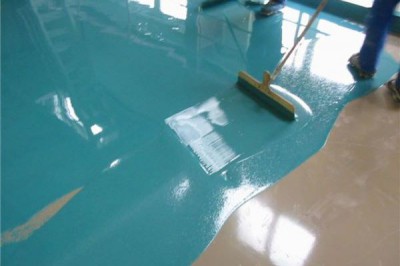
1 comment